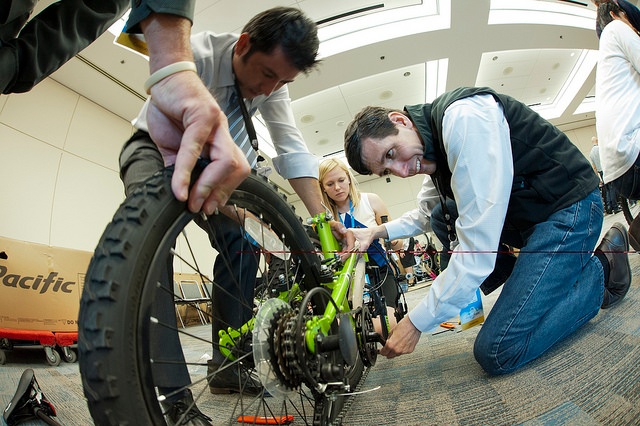The following is excerpted from the most recent issue of the Corporate Citizen.
Employee engagement is key to company performance, leading to positive effects such as higher productivity, improved work quality, and decreased job turnover. Employees want to be involved in their work, enthusiastic about the organization they work for, and committed to their fellow workers. Yet less than a third of U.S. workers were engaged in their jobs in 2014, according to Gallup.

There are organizations that excel in their employee engagement strategies, however, and they have realized substantial increases in engagement levels as a result. Salesforce is one of these companies.
Founded in 1999, the $6 billion software corporation is famously known for its perks for its 18,700 employees, from $250 toward takeout meals for new moms and dads, to a special communal workspace where employees can bring their dogs to work. Employees call it the Aloha culture: a spirit of wellness, customer success, innovation, winning as a team, fun, and giving back.
Salesforce’s employee engagement focus is about more than making the company a fun place to work. When CEO Marc Benioff founded the company in 1999, he wanted philanthropy to be part of the corporate DNA, and pioneered the 1-1-1 model: Salesforce donates 1 percent of its software, equity, and employees’ time to help communities around the world.
Since its founding, Salesforce has given more than $100 million in grants and provided product donations for over 27,000 nonprofits and higher education institutions. Now, the company has reached a new milestone: Salesforce has hit 1 million total volunteer hours.
The company has asked other entrepreneurs to take the 1-1-1 pledge and commit their resources to support integrating philanthropy into their business from an early stage, through an effort called Pledge 1%. In 2015, more than 500 companies joined the effort, dedicating 1 percent of their time, equity, product, or profit back into the community.
Here are some of the ways Salesforce integrates this philosophy into its efforts:
- Employee-inspired giving: Salesforce.org provides matching donations up to $5,000 per fiscal year to eligible charitable organizations worldwide, Riding the Wave Grants to celebrate employees who reach employment milestones, and Team Grants to help offset qualifying costs a nonprofit may incur for hosting teams of employee volunteers.
- Volunteering: Every Salesforce employee gets six paid days off every year to volunteer. All employees who complete their six days also receive a $1,000 champion grant that they can donate to the nonprofit of their choice.
- Wellness: Employees receive a monthly $100 wellness credit that can be used on gym memberships, dance classes, massages, and even ski lift tickets.
- Grants: Salesforce.org makes grants with a focus on education and STEM programs, workforce development, and technology innovation.
- Product: Salesforce.org donates and discounts its products to help nonprofit and higher education institutions increase their effectiveness. A pro bono program matches nonprofits and colleges to Salesforce professionals to maximize their Salesforce implementation.
Salesforce’s employee engagement efforts are paying off. The company is consistently voted a great place to work: eighth on Fortune’s 2015 “100 Best Companies to Work For,” fifth on LinkedIn’s 2014 list of “North America’s Most In Demand Employers,” and named to Glassdoor’s 2014 “50 Best Places to Work.” With such achievements, it’s no surprise that other companies are following suit.
“Giving back at Salesforce is a vital part of the company culture. We’re proud to have set an example for hundreds of leading companies around the world that have also committed to giving back through Pledge 1%,” said Suzanne DiBianca, president and co-founder of Salesforce.org.